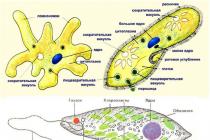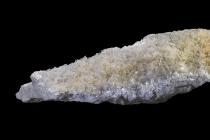Alcoholic hepatitis is inflammatory process. It occurs against the background of a large consumption of alcoholic beverages. As a result of this, the body is affected by toxins. The chronic form of the disease occurs 5-7 years after the onset of the inflammatory process. The scale can be serious, it all depends on the quality of alcohol consumed and its quantity.
ICD-10 code
For convenience, a special international classification of the disease was created. Thanks to it, you can understand the diagnosis made anywhere in the world. Simply put, this encoding is used everywhere. Hepatitis is one of the diseases of the digestive system.
K00-K93 Diseases of the digestive system. . K00-K14 Diseases of the oral cavity, salivary glands and jaws. K20-K31 Diseases of the esophagus, stomach and duodenum. K35-K38 Diseases of the appendix [vermiform appendix]. K40-K46 Hernias. K50-K52 Noninfectious enteritis and colitis.
K55-K63 Other bowel diseases. K65-K67 Diseases of the peritoneum
K80-K87 Diseases of the gallbladder, biliary tract and pancreas. K90-K93 Other diseases of the digestive system
K70-K77 Diseases of the liver.
- K70 Alcoholic liver disease (alcoholic liver disease, liver cirrhosis).
- K70.0 Alcoholic fatty degeneration of the liver.
- K70.1 Alcoholic hepatitis.
- K70.2 Alcoholic fibrosis and sclerosis of the liver.
- K70.3 Alcoholic cirrhosis of the liver.
- K70.4 Alcoholic liver failure (Liver failure).
- K70.9 Alcoholic liver disease, unspecified
- K71 Toxic damage to the liver.
- K72 Liver failure, not elsewhere classified. (Liver failure).
- K73 Chronic hepatitis, not elsewhere classified. (Chronic hepatitis).
- K74 Fibrosis and cirrhosis of the liver (cirrhosis of the liver).
- K75 Other inflammatory diseases of the liver.
- K76 Other diseases of the liver.
- K77 Liver disorders in diseases classified elsewhere
ICD-10 code
K70.1 Alcoholic hepatitis
Causes of chronic alcoholic hepatitis
The name speaks for itself. The main cause of liver problems is heavy alcohol consumption. The systematic intake of alcoholic beverages in an increased amount will sooner or later affect the condition of the liver. Alcohol contributes to the disruption of oxidative processes cell structures. It has a toxic effect and disables the body. Eventually, cirrhosis of the liver may develop, requiring a liver transplant.
The minimum amount of alcohol that can lead to inflammation is 20-30 grams regularly. This figure refers to the female population. For a man, it is slightly higher and amounts to 60-70 grams per day. As can be seen from these statistics, a very small amount of alcohol is enough to get serious problems. There are simply no other reasons contributing to the development of inflammation. It's all about alcohol. Therefore, its consumption should be kept to a minimum.
, , , ,
Pathogenesis
The toxic effects of ethanol lead to dependence. Ethanol has a particular effect on the concentration of acetaldehyde and acetate in the blood. The oxidative process increases NAD*H / NAD+ levels. It is these indicators that play an important role in the formation of fatty degeneration of the liver. As soon as the concentration of the first indicator increases, there is an increase in the synthesis of glycero-3-phosphate. Eventually fatty acid begin to actively accumulate in the liver.
Acetaldehyde has a hepatotoxic effect. It manifests itself mainly due to the intensification of lipid peroxidation processes. Ultimately, the functions of cell membranes are disrupted. In the complex of acetaldehyde with proteins, it leads to a change in the structure of hepatocyte microtubules. As a result, the formation of alcoholic hyalgin occurs. Intracellular transport is disturbed, hepatocyte dystrophy occurs.
Increased formation of acetaldehyde leads to a decrease in the activity of mitochondrial enzymes. As a consequence of this, the synthesis of cytokines is significantly enhanced. Cellular immunity is significantly impaired. Ultimately, the liver is exposed to a strong negative effect. The inflammatory process begins, the functionality is undermined. As a result, alcoholic hepatitis develops, flowing into a chronic form.
There are different points of view regarding the terminology of this type of alcoholic liver damage. L. G. Vinogradova (1990) gives the following definition: “chronic alcoholic hepatitis” is a term that refers to relapses of acute alcoholic hepatitis that occur against the background of an incomplete previous attack of acute alcoholic hepatitis and lead to a kind of liver damage with features of chronic hepatitis.
At histological examination There are two forms of chronic alcoholic hepatitis: chronic persistent and chronic active. Morphologically chronic persistentalcoholic hepatitis combines the characteristic features of alcoholic hepatitis with moderate pericellular and subsinusoidal fibrosis in the third zone of the acinar hepatic lobule, expansion of the portal ducts, portal fibrosis, and slight portal infiltration. In the clinical picture, there is a decrease in appetite, mild pain in the liver, belching, general weakness, a slight enlargement of the liver, a mild increase in the activity of γ-glutamyl transpeptidase in the blood serum.
Chronic alcoholic active hepatitis histologically combines signs of alcoholic hepatitis with active fibrosis and hyaline necrosis in the hepatic lobules, bridging and multilobular necrosis is possible with a high activity of the pathological process. Clinical manifestations are characterized by severe weakness, lack of appetite, pain in the liver, jaundice, enlarged, dense and painful liver, significant changes in liver function tests, in particular, high activity of γ-glutamyl transpeptidase, aminotransferases in the blood serum, an increase in the blood level of immunoglobulin A.
Chronic alcoholic hepatitis can progress to cirrhosis of the liver even in conditions of abstinence from alcohol due to the addition of autoimmune mechanisms - sensitization of T-lymphocytes to alcoholic hyaline.
Chronic alcoholic hepatitis is a liver disease. Naturally, caused by a large consumption of alcoholic beverages. This disease must be eliminated, because, in most cases, it flows into cirrhosis of the liver. During the intake of alcoholic beverages, acidaldehyde is formed in the liver. It is he who strongly affects the liver cells. It is able to start a number of chemical reactions in the body and thereby lead to damage to the organ.
Symptoms of chronic alcoholic hepatitis
The clinical manifestation of this disease is limited to meager symptoms. So, the organ may slightly increase in size, while pain appears. Severe pain, lack of appetite is not ruled out. Over time, the symptoms are supplemented by nausea and vomiting. There are no physical data.
Often there is a violation of the rhythm of sleep and wakefulness. A person has a decrease in libido, an increase in body temperature is noted. A number of other signs can be identified. So, the nails become white, spider veins appear, palmar erythema and ascites often develop. These changes are characteristic directly for the chronic form of the course of the disease. The symptoms described in the first paragraph appear at the initial stage.
The chronic course is characterized by the severity of symptoms, as well as their diversity. They may well appear at the same time. If treatment is not started on time, a fatal outcome is not ruled out. This happens due to the rapid development of cirrhosis of the liver. Severe liver damage requires liver transplantation. The risk factor is present in people with low weight, jaundice and increased liver density. Alcoholic hepatitis together with these factors is fraught with aggravating consequences.
First signs
The whole danger lies in the fact that for a long time the disease can be asymptomatic. Symptoms appear in severe stages. You can suspect something is wrong by violations of the liver. A person begins to feel weak, he has increased fatigue, appetite worsens, body weight decreases sharply. These are the first signs to look out for. As a rule, the pain syndrome does not particularly manifest itself at this stage. Therefore, a person most often thinks that his condition is associated with a decrease in immunity and other diseases. He is in no hurry to visit the doctor.
Over time, the pain syndrome begins to manifest itself. To a greater extent, it is similar to discomfort and a feeling of heaviness in the right hypochondrium. Again, this situation does not really bother a person. After all, you can easily think that low-quality products were used. Alcoholics, as a rule, do not understand that all troubles arise against the background of uncontrolled drinking. Gradually, nausea, vomiting and a bitter taste in the mouth are added to all the symptoms. There may be an eructation with bitterness. This sign is associated with the use of alcohol and fatty foods.
Jaundice may also appear. An icteric shade of the sclera and membranes of the oral cavity appears. As the disease progresses, yellowness of the skin occurs. Sometimes itching is added to this, as well as an increase in the liver.
, , , , ,
Consequences
If the treatment was started on time, then there can be no consequences. In most cases, everything ends successfully. Subject to all recommendations and the exclusion of alcoholic beverages, there can be no consequences. Otherwise, the development of cirrhosis and fibrosis of the liver is possible.
Fibrosis is a reversible stage of the process. It can be eliminated with proper treatment. Cirrhosis cannot be cured, in this case, it is possible to get rid of the problem by organ transplantation.
If the treatment is started on time, and the transplant gave a positive result, then the prognosis will be favorable. But, in no case should you drink alcoholic beverages. Otherwise, there is a risk of re-inflammation. Therefore, you should always follow all the recommendations given and not deviate from them. Otherwise, death is not ruled out. Whether there are consequences or not, in most cases depends directly on the patient.
, , , , ,
Complications
It must be understood that this inflammatory process has disappointing complications. The fact is that in most cases hepatitis turns into cirrhosis of the liver. It is impossible to cope with the problem at the medical level. All that is needed here is a transplant. In terms of severity, cirrhosis is equated to malignant tumor.
Ascites can be another complication. It is also caused by hepatitis. The main sign of a problem is a strong protrusion of the abdomen. This is due to the fact that in abdominal cavity a person has a large amount of free fluid. The type of ascites is completely determined by the amount of that same fluid. With a small form, it can be 3 liters, medium - more than 3 liters. With a high form, the amount of liquid varies up to 20-30 liters. A person is not able to move normally, there are some difficulties.
It should be understood that ascites is an alarm signal. It indicates that the organ is not able to filter the blood. You can't miss this moment. After all, otherwise the patient will live no more than 5 years.
, , ,
Diagnosis of chronic alcoholic hepatitis
The first step is to collect an anamnesis of the disease and complaints. It is important to identify how long the symptoms began. Important information is the amount of alcohol consumed and its frequency. It is important to collect an anamnesis of life. Does the patient have any chronic processes in the body, are there any hereditary diseases. The presence of bad habits, tumors and contact with toxic substances are also taken into account.
Then a physical examination is performed. On examination, the shade of the skin, the size of the abdomen, and the presence of spider veins on the body are taken into account. On palpation, a person feels pain in the abdomen. Thus, you can also feel the enlarged organ. It is important to assess the mental state of the patient.
If necessary, an ultrasound is performed. The complete picture consists of laboratory studies, instrumental and differential diagnostics. detailed information will be presented below.
, , ,
Analyzes
An important role is played by laboratory research. They include general analysis blood. Thanks to it, you can determine the level of red blood cells, as well as hemoglobin. It is easy, it turns out, to detect leukocytosis.
In addition to the general analysis, a biochemical blood test is given. It allows you to evaluate the functionality of the liver, pancreas. biochemical markers. According to them, blood coagulability indicators, the work of gamma-glutamyl transpeptidase are checked. Aliproprotein A1 is monitored. It can be used to determine the condition of the liver. If proline and hydroxyproline are significantly elevated in the blood, then, most likely, liver fibrosis occurs. This condition is characterized by the growth of scar tissue.
The coagulogram is also widely used. It is an analysis of the coagulability of blood systems. Lipidogram is a study of fat-like substances in the blood. It is possible to determine the long-term use of alcohol by laboratory signs. In humans, the activity of gamma-glutamyl transpeptidase, immunoglobulins, aspartate aminotransferase is significantly increased.
To get a complete picture, markers are defined. These are specific indicators that allow you to determine the presence of inflammatory processes in the liver that were caused by specific viruses. They also give a general urine test. It allows you to determine general state kidneys and urinary system. A coprogram is also carried out, in other words, an analysis of feces for the presence of undigested fragments of food and fat in it.
, , , , ,
Instrumental diagnostics
This research methodology is diverse. So, most often resort to the help of ultrasound. This will allow you to assess the condition of the abdominal organs and notice any changes in them.

Esophagogastroduodenoscopy is widely used. It is a diagnostic procedure during which the specialist manages to assess the condition of the esophagus as a whole. This allows you to identify pathologies. Inspection lends itself to the stomach and duodenum. The study is carried out using a special tool - an endoscope.
In addition, a needle biopsy is performed. For this, a damaged piece of the liver is taken and carefully examined. This allows you to assess the structure of the organ and make the correct diagnosis.
Widely used spiral CT scan. This method consists in obtaining X-ray images at different depths. The study allows you to get an accurate image of the affected area. Magnetic resonance imaging has a similar effect. This technique is built on the chain of interaction between the human body and the liquid. It allows you to get a clear image of the organ under study.
Elastography. This technique allows you to examine the liver tissue. Everything is carried out using a special apparatus that allows you to determine the presence of liver fibrosis. During the procedure, a special compression of the tissue under study is carried out. As a result, you can see the changes. Most often, the procedure is used as an alternative to a biopsy.
Retrograde cholangiography. This technique is based on contrast management. It is usually introduced into Vater's nipple. The procedure allows you to determine the deterioration of the outflow of bile. Cholangiography is performed for people with severe cholestasis syndrome.
Differential Diagnosis
This type of diagnosis includes laboratory tests. Initially, a person needs to pass a general blood test, as well as a biochemical blood test. By the level of leukocytes, hemoglobin and erythrocytes, it is possible to determine the presence of abnormalities and the inflammatory process. Particular attention is paid to blood clotting.
In addition to this procedure, a biopsy is performed. It allows you to make a sample of the affected tissue and examine it. This technique is the most reliable, but only works in conjunction with blood tests.
To determine the state of the urinary system, a urine test is taken. It is important to determine the presence of markers. In addition, the stool is examined for the presence of coarse dietary fiber or undigested food fragments. It is impossible to get a complete picture by instrumental or diagnostic methods alone. All studies must be carried out collectively.
, , , , , , , ,
Treatment of chronic alcoholic hepatitis
First of all, a person must refuse to take any alcoholic beverages. Naturally, for an alcoholic this is an unbearable burden. Therefore, it will have to be controlled. Because sooner or later all this will flow into cirrhosis of the liver. This is a very severe lesion, which most often ends in death.
It is worth visiting a psychologist and a narcologist. This will allow you to get rid of addiction and understand the severity of the whole process. Indeed, in most cases, a person is not able to cope with the problem on his own. All patients must strictly follow the diet number 5. Its purpose is to reduce the load on the diseased organ. That is why fatty, fried and spicy foods are among the forbidden foods. It is worth giving up salt, canned food, sweets and strong teas. Preference is given to food, which contains a lot of fiber, vitamins and minerals.
Naturally, it is impossible to do without medicines. True, in this case, you need to be extra careful. Because medications should have a positive effect on the body and not injure it. Most often, hepatoprotectors are prescribed. This is a group of drugs that are able to regenerate liver cells and protect it from negative impact. It is mainly recommended to use Ursosan, Essentiale N, Heptral and Rezalyut Pro. The course of treatment does not exceed one month. Detailed information about medications will be presented below.
It is important to fill the human diet with vitamins and minerals. Will be useful herbal teas, including those based on echinacea and mint. If a person is pestered by an overexcited and stressful state, it is worth drinking a sedative. Valerian can act as it, but only in tablets! Tincture should not be used in any case! Enough 2 tablets 3 times a day. With severe liver damage, when cirrhosis is observed, it is worth resorting to organ transplantation. Otherwise, the person will not survive.
Medications
Ursosan. The dosage of the drug is prescribed by the attending physician. In especially severe cases, 14 mg per kilogram of body weight is used. The duration of therapy can be from one month to six months. In some cases, even 2 years. Contraindications: hypersensitivity, pregnancy, impaired liver and kidney function. Side effects: pain in the liver, nausea, vomiting, allergic reactions.
Essentiale N. The dosage is 2 capsules 3 times a day. The duration of therapy depends on the condition of the person. Contraindications: hypersensitivity. Side effects: extremely rarely, intestinal upset may occur.
Heptral. The drug can be used both in the form of tablets and injections. With prolonged therapy, the daily dose should not exceed 4 tablets. If the agent is administered, then 400-800 mg is sufficient. The duration of treatment is determined by the doctor. Contraindications: hypersensitivity. Side effects: heartburn, nausea, sleep disturbance, allergic reactions.
Resolution Pro. The drug is used 2 capsules, 3 times a day before meals. The duration of treatment depends entirely on the course of the disease. Contraindications: hypersensitivity, antiphospholipid syndrome. Side effects: diarrhea, allergic reactions.
Alternative treatment
Traditional medicine has a lot healthy recipes. Many herbs, fruits, plants and roots can be used for treatment. True, some of them can be toxic. Therefore, independent use can lead to a lot of unpleasant consequences. Before starting treatment, you should consult with a specialist.
Recipe 1. Blueberries. The beneficial properties of this berry have long been known. Its leaves contain special enzymes that help fight hepatitis. Many healers recommend using blueberry decoctions. You can use fruit drinks, juices and just eat the berry. Even jam will have a positive effect. The leaves themselves have special power. They are able to block viruses and protect the body.
Recipe 2. Pumpkin. It is useful with minerals and vitamins. Its pulp can be used both for treatment and just nutrition. It should be noted that it is not recommended to use it for more than 3 months. Traditional healers recommend using it fresh for about half a kilogram per day. You can cook porridge, stew it, and also eat it in the form of candied fruits. Of particular benefit is raw pumpkin along with sour cream. You can use pumpkin juice. Pumpkin treatment is useful in cirrhosis of the liver.]
Herbal treatment
Medicinal herbs have a positive effect on many organs and systems. But, it is important to understand which of them can be used, and which ones should be avoided.
Recipe 1. Dandelion herb. With its help, many diseases can be eliminated. Especially those associated with liver failure. In the treatment of hepatitis, dandelion grass should be consumed fresh. Salads are fine. You can use jam from them. Dandelion has a choleretic effect. A decoction of it should be consumed before each meal, half a glass. It is prepared simply, dandelion leaves are taken and poured with boiling water. Then the tool must be allowed to brew and cool. The root of the plant is used to fight hepatitis. It should be crushed and evaporated for an hour. Then apply a tablespoon before meals.
Recipe 2. You need to take St. John's wort, calendula flowers, and chicory. Mix all this and take only 2 tablespoons of the collection. Then pour them with two glasses of cold water. Everything is infused all night, boiled for 5 minutes in the morning and filtered. You can drink the remedy regardless of the meal. The course of treatment is 2 months.
Recipe 3. Take the herb horsetail, yarrow and rose hips. It is important that everything is in equal proportions. After that, everything is mixed and only one tablespoon is taken. The collection is poured with a glass of boiling water and infused for 2-3 hours. You can use the resulting remedy 3 times a day 30 minutes before meals. The duration of treatment is 2 weeks. If necessary, the course is repeated after a month.
Homeopathy
Homeopathic remedies have always been in demand. True, they are not suitable for everyone. So, there are both positive and negative opinions about them. Among homeopathic remedies, only a few are able to help. So, the funds deserved special popularity: Hepel and Galstena. They have a positive effect, but only if applied under the supervision of an experienced homeopath. The main action of the funds is aimed at regenerating liver cells and creating a protective barrier around it. Drug therapy is long-term. It should be noted that monopreparations have always been distinguished by a special affinity for liver cells. Among them, it is worth noting May celandine and milk thistle. These two drugs are able to eliminate most of the symptoms that occur with liver damage. In addition, they support her.
The negative opinion is that not all people resort to the help of homeopathy. It's not like she can help everyone. The fact is that homeopathic remedies do not undergo any clinical trials, so it is difficult to say whether a positive effect will be observed.
Surgical treatment
Under surgical treatment refers to liver transplantation. This operation is not only difficult, but also expensive. Such an intervention is appropriate only if a person has cirrhosis of the liver or the last degree of liver failure.
High-quality transplantation can be carried out exclusively in German clinics. As mentioned above, the procedure is really expensive. The complexity of this operation lies not only in the price, but also in the search for a donor, because finding a person with good physical and mental characteristics is not always so easy. Some people stand in the "queue" for a new organ for years and do not always wait for it.
The operation itself is difficult. The recovery period is very long. It is necessary to monitor the condition of a person and an organ. After all, he takes root for a long time and this is not always possible. Naturally, it is best not to resort to such an operation. No one gives a 100% positive result. To avoid such a need, you should simply exclude alcohol consumption and treat pathological and inflammatory processes in the body in time.
Prevention
Prevention of alcoholic hepatitis is the only way to avoid this problem. After all, the treatment is not only long, but also difficult. Moreover, during the recovery period, many difficulties can arise. First of all, the consumption of ethanol-containing drinks should be excluded. In this case, we mean alcoholic beverages, of any percentage significance. The daily intake for a woman should not exceed 20 grams, and for a man 40 grams. If these figures are significantly higher, the likelihood of developing alcoholic hepatitis also increases.
The only way to avoid this problem is to avoid alcohol completely. If a person consumes it periodically, it is difficult to draw conclusions regarding his health. The development of alcoholic hepatitis depends entirely on the amount of alcohol consumed, the person's lifestyle and the nature of his diet. Naturally, a special place is given to the state of the liver. Initially, it may not be at its best, and alcohol will only aggravate the situation.
Forecast
The prognosis depends entirely on the condition of the liver and the stage of development of the disease. The best prognosis is observed in the presence of alcoholic fatty degeneration. This condition is characterized by the presence of fatty droplets inside the liver cells. It happens under the influence of alcohol. Fixing this problem is not that difficult. Therefore, the prognosis is usually favorable.
A negative course is observed in cirrhosis of the liver. In this case, the problem can be eliminated only by means of transplantation. Medicines are unlikely to have the desired effect. With cirrhosis, the prognosis is poor.
A positive course is possible only if a person completely refuses to take alcohol and begins timely treatment of inflammatory processes in the body. Young age and normal body weight also affect the favorable prognosis. Finally, the disease proceeds much more favorably in men than in women.
Alcoholic hepatitis is a diffuse (extensive - in all parts of the body) inflammatory process in the liver tissue, which is the result of toxic damage to the liver by alcohol and its decay products.
In alcoholic hepatitis, fat droplets accumulate inside hepatocytes (liver cells), and inflammation of the liver and the death of some parts of its normal tissue also occur. Over time, normal liver tissue is replaced by rough fibrous (scar) tissue (fibrosis process). Due to the fact that the amount of healthy liver tissue is significantly reduced, the liver ceases to cope with its functions (there are more than 500 of them, including the neutralization of toxic substances, the formation and storage of useful substances, etc.).
This disease usually develops after 5-7 years from the start of regular alcohol consumption - 40-60 grams per day of ethanol (pure alcohol) for men and more than 20 grams for women. 10 milliliters (ml) of ethanol corresponds to 25 ml of vodka, 100 ml of wine, 200 ml of beer.
Symptoms of alcoholic hepatitis
The disease develops gradually and imperceptibly for the patient.
In mild cases, alcoholic hepatitis is detected only with the help of laboratory tests.
It usually takes about five years from the onset of liver damage to the onset of symptoms. As the condition of the liver worsens, the number and severity of symptoms increase.
Acute alcoholic hepatitis
usually develops after heavy drinking in patients with pre-existing cirrhosis of the liver (diffuse (extensive) liver disease, in which the death of its tissue occurs and the formation of nodes from scar tissue that change the structure of the liver).
This leads to the superimposition of the symptoms of hepatitis (inflammation of the liver) on the symptoms of cirrhosis and significantly worsens the prognosis.
All manifestations of alcoholic hepatitis are combined into several syndromes (a stable set of symptoms united by a single development).
- Asthenic syndrome:
- decrease in working capacity;
- increased fatigue;
- weakness;
- sleepiness during the day;
- loss of appetite;
- depressed mood.
- Dyspeptic manifestations
(digestive disorders):
- loss of appetite;
- nausea and vomiting;
- bloating;
- pain in the umbilical region;
- rumbling in the stomach.
- Systemic manifestations of alcohol intoxication
(the effects of alcohol on various organs):
- peripheral polyneuropathy (damage to the nerves connecting the organs and limbs of a person with the brain and spinal cord). Manifested by violations of sensitivity and limitation of movements;
- muscle atrophy (thinning of muscles and a decrease in their volume);
- tachycardia (rapid heartbeat) and shortness of breath (rapid breathing) due to damage to the cardiovascular system.
- Cachexia (exhaustion), weight loss.
- Low hyper-gamma globulinemia (moderate increase in gamma globulins (specific proteins immune system) in the blood - the norm is 8.0-13.5 grams of gamma globulins in one liter of blood).
- The De Ritis coefficient is the ratio of aspartate aminotransferase (AST, or AST) to alanine aminotransferase (AlAT, or ALT): normally equal to 1. AST and ALT are specific biologically active substances involved in metabolism and normal liver function. In liver cirrhosis, the ratio of AST to ALT becomes less than 1.
- Arterial hypotension is a decrease in systolic (the first digit when measured) blood pressure below 100 millimeters of mercury.
- Syndrome of "small" hepatic signs (syndrome of hepatocellular insufficiency).
- Telangiectasias (vascular "asterisks" on the face and body).
- Palmar (on the palms) and / or plantar (on the soles of the feet) erythema (reddening of the skin).
- General feminization of appearance - a man acquires part of the shape and appearance of a woman:
- deposition of fat on the thighs and abdomen;
- thin limbs;
- poor hair growth in the armpit and on the pubis;
- gynecomastia (formation and enlargement of the mammary glands in a man);
- testicular atrophy (decrease in the volume of testicular tissue, disorder of their function);
- impotence (a disorder of sexual and erectile function in men, the inability to have a normal sexual intercourse).
- Hypertrophy (enlargement) of the parotid salivary glands (symptom "hamster").
- Expanded capillary network on the face (symptom of "dollar" bill, red face).
- Tendency to form bruises.
- Dupuytren's contracture (painless subcutaneous cord - compaction of tissues in the form of a tourniquet) - curvature and shortening of the tendons of the palm, leading to limited function of the palm and its flexion deformity.
- Icteric coloration of the skin, mucous membranes of the oral cavity and sclera (white membranes of the eyeball).
- Leukonychia (small white stripes on the nails).
- Symptoms of "drum sticks" (an increase in the size of the fingertips, which makes them appearance similar to drumsticks) and "watch glasses" (an increase in size and a rounded change in the nail plates).
Periods of severe deterioration are associated with continued alcohol use leading to episodes of acute alcoholic hepatitis.
Chronic alcoholic hepatitis has less pronounced manifestations than acute hepatitis and is characterized by the symptoms described above.
Forms
There are 2 forms of alcoholic hepatitis.
- Persistent form - relatively stable, reversible (curable) on condition of stopping alcohol intake (abstinence from alcohol for 3-6 months leads to an improvement in the picture). With continued alcohol intake, it can go into a progressive form.
- progressive form
- progressive deterioration. It occurs in every fifth case of alcoholic hepatitis. Accompanied by the formation of small foci of necrosis (cell death) in the liver, often leads to the development of cirrhosis of the liver (diffuse (extensive) liver disease, in which normal tissue dies, gradually replacing it with coarse fibrous (scar) tissue (fibrosis process) and the formation of nodes from scar tissue that change the structure of the liver). With timely treatment of alcoholism, it is possible to stabilize the condition with the preservation of residual effects (for example, external manifestations of the syndrome of "small" hepatic signs and areas of fibrous (cicatricial) changes in the liver).
- Light degree of activity - an increase in the activity of transaminases (liver enzymes - substances that promote certain chemical reactions) by no more than 3 times.
- Average degree of activity - increase in activity of transaminases by 3-5 times.
- Severe degree of activity - increase in activity of transaminases more than 5 times.
- Acute alcoholic hepatitis
- acute (lasting less than 6 months) progressive degenerative-inflammatory (with signs of inflammation and cell death) liver damage. In every twentieth patient, it relatively quickly transforms into alcoholic cirrhosis of the liver (diffuse (extensive) liver disease, in which the death of liver tissue occurs and the formation of nodes from scar tissue that change the structure of the liver). The most severe course of acute alcoholic hepatitis develops after repeated alcohol intake against the background of formed alcoholic cirrhosis of the liver. Clinically, acute alcoholic hepatitis can be represented by four variants of the course: latent, icteric, cholestatic
And fulminant.
- latent variant has no symptoms and is diagnosed by an increase in transaminases in a patient who abuses alcohol. To confirm the diagnosis, a liver biopsy is required (taking a piece of the organ for examination).
- F icterus variant (most common) - among the symptoms dominated by jaundice (yellow coloration of the skin, mucous membranes and body fluids (eg, saliva, lacrimal fluid)), not accompanied by skin itching.
- cholestatic variant observed in approximately one in 10 patients. Accompanied by symptoms of cholestasis - stagnation of bile (jaundice, severe itching, discoloration of feces, dark urine). It is characterized by a protracted course (it can last for years).
- Fulminant variant characterized by rapid progression of all symptoms. May lead to death of the patient.
- Chronic alcoholic hepatitis - a long-term (lasting more than 6 months) degenerative-inflammatory liver disease caused by alcohol intake and capable of progressing to cirrhosis in a large number of cases.
Causes
The cause of alcoholic hepatitis is the use of alcohol, regardless of the type of drink: either the simultaneous use of large doses of alcohol, or long-term (long-term) use of its moderate doses - in terms of ethanol (pure alcohol) is 40-60 grams.
Causes of the damaging effect of alcohol on the liver.
- The death of hepatocytes (liver cells) under the influence of alcohol occurs faster than their recovery is possible. During this time, instead of hepatocytes, connective (scar) tissue has time to develop.
- Oxygen starvation of cells, leading to their wrinkling, and then to death.
- Strengthening the formation of connective tissue.
- Suppression of protein formation in hepatocytes, which leads to their swelling (increased water content) and enlargement of the liver.
- Simultaneous use of large doses of alcohol.
- Daily multiple use of alcoholic beverages.
- Long-term use of alcohol (8 years or more).
- Hereditary predisposition (the disease is transmitted from parents to children).
- Irrational and unbalanced nutrition (especially protein deficiency in food).
- Overnutrition, including obesity (weight gain due to adipose tissue).
- Infection with hepatotropic viruses (viruses that can cause inflammation of the liver and death of its cells).
Diagnostics
- Analysis of the history of the disease and complaints (when (how long ago) an enlarged liver appeared, pain and heaviness in the upper abdomen, nausea, an increase in the size of the abdomen, vascular "asterisks" on the face and body, with which the patient associates the occurrence of these symptoms).
- Life history analysis. Does the patient have any chronic diseases, are there hereditary (passed from parents to children) diseases, does the patient have bad habits whether he took any drugs for a long time, whether tumors were detected in him, whether he was in contact with toxic (poisonous) substances.
- Physical examination. On examination, yellowness of the skin, an increase in the size of the abdomen, the presence of vascular "asterisks" (dilated small vessels) on the skin of the body are determined. On palpation (palpation), pain in various parts of the abdomen is assessed. Percussion (tapping) determines the size of the liver and spleen.
- Assessment of the mental state of the patient for the timely diagnosis of hepatic encephalopathy (a disease that has developed as a result of the toxic effect of the decay products of normal liver cells on the brain tissue and blood circulation disorders).
- A general blood test reveals a decrease in the number of erythrocytes (red blood cells) with the development of anemia (a decrease in the level of hemoglobin, a special oxygen-carrying substance of red blood cells), a decrease in the number of platelets (platelets, the adhesion of which provides the initial stage of blood clotting), less often - all blood cells. Leukocytosis (an increase in the number of leukocytes - white blood cells) can be detected, mainly due to their special variety - neutrophils.
- Biochemical blood test (for monitoring the function of the liver, pancreas, the content of important trace elements (potassium, calcium, sodium) in the blood).
- Biochemical markers (indicators) of liver fibrosis - PGA-index:
- prothrombin index - an indicator of blood clotting (P);
- gamma-glutamyltranspeptidase - a biologically active substance that normally participates in molecular reactions in the liver tissue (G);
- alipoprotein A1 - a plasma protein (liquid part) of the blood responsible for transporting "good" cholesterol (a fat-like substance that prevents narrowing of the lumen of blood vessels) in the body - (A);
- PGA values range from 0 to 12. If PGA is 9, the probability of cirrhosis is 86%.
- An increase in the blood of proline and hydroxyproline (amino acids - the constituent elements of the protein) is distinctive feature alcoholic fibrosis of the liver (growth of scar tissue in the liver without changing its structure).
- A coagulogram (analysis of the coagulation and anticoagulation systems of the blood) reveals a slowdown in the formation of blood clots due to a decrease in the number of coagulation factors that are formed in the liver.
- Lipidogram is a study of fat-like substances in the blood. With alcoholic liver disease, the level of triglycerides (special fat-like substances, the main source of energy for cells) in the blood increases.
- Alpha-fetoprotein is a substance that rises in the blood in liver cancer (malignant tumor - a tumor that grows with damage to surrounding tissues). Liver cancer can develop as a complication of alcoholic hepatitis during its long course.
- Laboratory signs of prolonged alcohol intake. Boost:
- activity in the blood of gamma-glutamyl transpeptidase;
- blood levels of immunoglobulins A (Ig A - a special type of antibodies - proteins produced to fight foreign agents);
- average volume of erythrocytes;
- in the blood activity of aspartate aminotransferase (AST, or AST), exceeding the activity of alanine aminotransferase (AlAT, or ALT). AST and ALT are specific biologically active substances involved in metabolism and normal liver function;
- blood levels of transferrin (an iron-carrying protein).
- Determination of markers (specific indicators) of viral hepatitis ( inflammatory diseases liver caused by specific viruses).
- General urine analysis. Allows you to assess the condition of the kidneys and urinary tract
- Coprogram - analysis of feces (you can detect undigested fragments of food and fat, coarse dietary fiber).
- Ultrasound examination (ultrasound) of the abdominal organs allows you to assess the size and structure of the liver and spleen.
- Esophagogastroduodenoscopy (EGD) is a diagnostic procedure during which the doctor examines and evaluates the condition of the inner surface of the esophagus (to detect pathologically (abnormally) dilated veins), stomach and duodenum using a special optical instrument (endoscope).
- Puncture biopsy of the liver (taking a piece of the liver for research) allows you to assess the structure of the liver and establish a diagnosis
- Spiral computed tomography (CT) is a method based on a series of X-ray images at different depths that allows you to get an accurate image of the organs under study (liver and spleen).
- Magnetic resonance imaging (MRI) - a method based on building chains of water when exposed to strong magnets on the human body - allows you to get an accurate image of the organs under study (liver and spleen).
- Elastography is a study of liver tissue performed using a special apparatus to determine the degree of liver fibrosis. In the process of elastography, compression (compression) of the tissues under study is performed using ultrasound. The speed of propagation of elastic waves depends on the elasticity of the tissue, that is, on the content of connective (scar) tissue in it. Elastography is an alternative to liver biopsy.
- Retrograde cholangiography is an X-ray method for examining the biliary system, in which contrast (a dye that makes the areas where it is visible on an x-ray) is injected into the Vater nipple (the hole through which bile and pancreatic juice enter the duodenum). Allows you to identify the causes of deterioration of the outflow of bile. It is carried out only in patients with severe cholestasis syndrome (insufficient flow of bile into the duodenum - the initial section of the small intestine).
- Consultations with a narcologist are also possible.
Performed by a specialist (gastroenterologist or hepatologist) on the Child-Pugh scale. Several criteria are evaluated:
- the level of bilirubin in the blood (a breakdown product of erythrocytes (red blood cells));
- the level of serum albumin (the smallest proteins);
- prothrombin index (one of the indicators of blood clotting);
- the presence of ascites (free fluid in the abdominal cavity);
- hepatic encephalopathy (a disease that has developed as a result of the toxic effect of the decay products of normal liver cells on brain tissue and blood circulation disorders).
- A - compensated (that is, compensated - close to normal) cirrhosis of the liver;
- B - subcompensated (that is, not fully compensated) cirrhosis of the liver;
- C - decompensated (that is, with deep irreversible (that is, irreparable modern methods treatment) disorders of the liver) cirrhosis of the liver.
Alcohol Hepatitis Treatment
The basis of treatment is the cessation of alcohol intake.
- Diet therapy.
Diet number 5:
- eating 5-6 times a day;
- exclusion from the diet of spicy, fatty, fried, smoked, rough foods;
- limitation table salt up to 3 grams per day;
- high protein content (0.5-1.5 grams of protein per 1 kilogram of patient weight per day). With the development of hepatic encephalopathy (a disease that has developed as a result of the toxic effect of decay products of normal liver cells on brain tissue and blood circulation disorders), the total amount of protein is limited to 0-30 grams per day;
- the use of food products with a high content of trace elements (especially magnesium, zinc, selenium) and vitamins (groups B, C, A and K): fish, bananas, buckwheat, fruits and vegetables;
- with anorexia (aversion to food), it is possible to feed through a tube (a tube inserted into the stomach cavity) or parenteral nutrition ( intravenous administration solutions of proteins, fats, carbohydrates, vitamins and minerals).
- Conservative (non-surgical) treatment.
- Hepatoprotectors (preparations that preserve the activity of liver cells), the most effective of which are preparations made from milk thistle, a medicinal plant.
- Preparations of ademetionine (a substance found in all tissues and body fluids and having various positive effects): protecting liver cells from damage;
- improvement of the outflow of bile;
- neutralization of toxic (poisonous) substances;
- stimulation of recovery of liver cells;
- protection of the brain from damage by harmful substances formed during violations of the liver;
- antidepressant effect (increase in depressed mood).
- Ursodeoxycholic acid preparations (UDCA - components of bile that prevent the death of liver cells).
- Vitamins of groups A, B, C, E are used in connection with their insufficient content in the body due to absorption disorders.
- Glucocorticoids (synthetic analogs of adrenal cortex hormones) reduce the severity of inflammation, prevent the formation of connective (scar) tissue, and suppress the production of antibodies (proteins produced by the body to fight foreign substances) that damage liver tissue.
- Angiotensin converting enzyme inhibitors (ACE inhibitors) arterial pressure, which have anti-inflammatory activity and prevent the formation of connective tissue).
- Tissue protease inhibitors (drugs that inhibit the activity of substances that cause protein breakdown) prevent the formation of connective tissue in the liver.
- Treatment of hepatic encephalopathy:
- diet therapy. With the development of hepatic encephalopathy, the total amount of protein is limited to 0-30 grams per day;
- lactulose (a synthetic analogue of lactose - milk sugar). Removes from the intestines harmful substances that accumulate due to violations of the liver and can cause brain damage;
- Antibacterial therapy is a treatment aimed at removing microorganisms (causative agents of various diseases) from the body. It is performed after identifying the type of microorganism;
- infusion therapy (intravenous drip of water-salt solutions, glucose-vitamin mixtures, etc.).
The dosage and duration of use of each of the drugs are determined individually.
- Surgery.
Transplantation (liver transplant) is performed when it is impossible to restore the normal functioning of the patient's own liver. The most common transplant is a part of the liver of a close relative. A prerequisite is a complete abstinence from alcohol for at least 6 months before transplantation.
Complications and consequences
A complication of alcoholic hepatitis is the development of cirrhosis of the liver (diffuse (extensive) liver disease that develops as a result of prolonged alcohol intake, in which liver tissue dies and is gradually replaced by coarse fibrous (scar) tissue (fibrosis process).
In this case, usually small nodes are formed from scar tissue, which change the structure of the liver).
Complications of liver cirrhosis.
- Ascites (accumulation of fluid in the abdominal cavity). In many cases, ascites becomes refractory - that is, it does not respond to drug therapy. Such patients require repeated abdominal paracentesis - puncture (piercing) of the abdominal cavity with the removal of fluid for diagnostic (composition studies) and therapeutic (reduction of compression of the abdominal organs) purposes.
- Peritonitis is an inflammation of the peritoneum (the membrane lining the abdominal cavity from the inside and covering the organs of the abdominal cavity).
- Varicose (changed wall structure due to increased venous pressure) expansion of the veins of the esophagus, bleeding from these veins. Symptoms of gastrointestinal bleeding:
- hematemesis;
- melena (black stool);
- low blood pressure (less than 100/60 millimeters of mercury);
- heart rate over 100 beats per minute (normal - 60-80).
- Confusion, hepatic encephalopathy (a disease that has developed as a result of the toxic effect of the decay products of normal liver cells on brain tissue and blood circulation disorders).
- Hepatocellular carcinoma (malignant (hard to treat, rapidly progressing) liver tumor that occurs when it is chronically damaged (viral and / or alcoholic nature).
- Hepatorenal syndrome - severe renal failure (persistent inhibition of kidney function, leading to the accumulation of toxic substances in the blood due to impaired filtration) in patients with liver cirrhosis.
- Hepatopulmonary syndrome is a low oxygen content in the blood in patients with cirrhosis of the liver due to changes in blood circulation in the lungs.
- Hepatic gastropathy is a disease of the stomach that occurs as a result of impaired liver function and altered blood circulation.
- Hepatic colopathy is a disease of the large intestine due to impaired liver function and altered blood circulation.
- Chronic menstrual dysfunction (irregular, too heavy, scanty or absent periods).
- Infertility.
The prognosis is better with a complete refusal to drink alcohol, timely full treatment, young age and normal body weight of the patient.
Scientists have proven that the disease is more favorable in men than in women.
Prevention of alcohol hepatitis
- Refusal to drink alcohol.
- Rational and balanced nutrition (refusal of too hot, smoked, fried and canned food).
Additionally
- The toxic (damaging) effect does not depend on the type of drinks taken and is determined by the amount of ethanol in them.
- Alcoholic hepatitis is one of the variants of alcoholic liver disease (various violations of the structure and function of the liver, which develops as a result of prolonged alcohol intake).
- Currently, much attention is paid to the detection of liver fibrosis (proliferation of scar tissue in the liver while maintaining its normal structure) and the presence or absence of its progression. The degree of fibrosis is determined by various scales, in Russia the METAVIR scale is more often used.
- F0 - no fibrosis.
- F1 - portal fibrosis (growth of scar tissue inside the liver around the branches of the portal vein - a vessel that brings blood to the liver from the abdominal organs) without the formation of septa (connective tissue (based on connective tissue, which plays a supporting and structural function in the body) layers).
- F2 - portal fibrosis with rare septa.
- F3 - many septa without the formation of cirrhosis (diffuse (extensive) liver disease, in which the death of liver tissue occurs and the formation of nodes from scar tissue that change the structure of the liver).
- F4 - cirrhosis.
- The authors
- Ivashkin V.T., Lapina T.L. (ed.) Gastroenterology. National leadership. - 2008. M., GEOTAR-Media. 754 p.
- Sablin O.A., Grinevich V.B., Uspensky Yu.P., Ratnikov V.A. Functional diagnostics in gastroenterology. Teaching aid. - St. Petersburg. - 2002. - 88 p.
- Bayarmaa N., Okhlobystin A.V. The use of digestive enzymes in gastroenterological practice // BC. - 2001. - Volume 9. - No. 13–14. - from. 598–601.
- Kalinin A.V. Violation of abdominal digestion and its drug correction // Clinical perspectives in gastroenterology, hepatology. - 2001. - No. 3. - from. 21–25.
- Atlas of clinical gastroenterology. Forbes A., Misievich J.J., Compton K.K., et al. Translated from English. / Ed. V.A. Isakov. M., GEOTAR-Media, 2010, 382 pages.
- Internal diseases according to Tinsley R. Harrison. Book 1 Introduction to Clinical Medicine. M., Practice, 2005, 446 pages.
- Davidson's Internal Diseases. Gastroenterology. Hepatology. Ed. Ivashkina V.T. M., GEOTAR-Media, 2009, 192 pages.
- Internal illnesses. Makolkin V.I., Sulimov V.A., Ovcharenko S.I. and others. M., GEOTAR-Media, 2011, 304 pages.
- Internal diseases: laboratory and instrumental diagnostics. Roitberg G. E., Strutynsky A. V. M., MEDpress-inform, 2013, 800 pages.
- Internal illnesses. Clinical reviews. Volume 1. Fomin V.V., Burnevich E.Z. / Ed. ON THE. Mukhin. M., Litterra, 2010, 576 pages.
- Internal diseases in tables and diagrams. Directory. Zborovsky A. B., Zborovskaya I. A. M., MIA, 2011 672 pages
- Radchenko V.G., Shabrov A.V., Zinovieva V.N. Fundamentals of clinical hepatology. Diseases of the liver and biliary system. St. Petersburg: Dialect; M.: "BINOM", 2005.
- Rusakova O.S., Garmash I.V., Gushchin A.E. Alcoholic liver cirrhosis and genetic polymorphism of alcohol dehydrogenase (ADH2) and angiotensinogen (T174M, M235T) // Clinical pharmacology and therapy. 2006. No. 5. S. 1–33.
- Dorland's Medical Dictionary for Health Consumers. 2007
- Mosby's Medical Dictionary, 8th edition. 2009
- Saunders Comprehensive Veterinary Dictionary, 3 ed. 2007
- The American Heritage Dictionary of the English Language, Fourth Edition, Updated in 2009.
- O'Shea R.S., Dasarathy S., McCullough A.J. Alcoholic liver disease. Hepatology, 2010, 51, 307–328.
Alcohol abuse is the cause of the development of alcoholic hepatitis. Currently in Russia there are more than 10 million men and women with chronic alcoholism. 21% were diagnosed with inflammation of the liver. It can be cured only with 1 and 2 degrees of the disease. The last stage is not treatable and turns into cirrhosis.
Causes of the disease
Hepatitis is a diffuse inflammation of the liver tissue. The alcoholic form of the disease is not contagious (unlike hepatitis C, which is transmitted through blood, saliva, breast milk). The cause of the pathology is toxic damage hepatocytes with ethyl alcohol and its decay products.
Liver damage is caused by products with any degree of strength. The amount of alcohol consumed has a greater influence on the rate of development of hepatitis. On average, pathology occurs after 4-5 years of daily drinking 70 ml of moonshine, 100 ml of vodka, 600 ml of wine, 1000-1200 ml of beer. When the dose is exceeded, tissue inflammation occurs earlier.
The rate of development of alcoholic hepatitis depends on the genetic content of acetaldehyderogenase and alcohol dehydrogenase, the enzymes responsible for oxidation ethyl alcohol. In people with a low concentration of AC and AL, alcohol breaks down for a long time, it “hits” the liver more. At risk are residents of Japan, Vietnam, Korea, West Africa, Siberia, Northern Europe.
The gender of the patient affects the development of the disease: in women, the tendency to chronic diseases above the liver. Inflammation from alcohol develops in them three times faster than in men, hepatitis is more difficult, less treatable.
Symptoms and forms
The first months of hepatitis are asymptomatic, inflammation is detected during instrumental diagnostics of the liver (ultrasound, radiography reveal an increase in echogenicity, a decrease in the visibility of vascular structures). In a complicated form, signs appear (the same for men and women):
- Pain in the upper abdomen (under the ribs) on the right side.
- Asthenovegetative syndrome (weakness, dramatic weight loss, lack of appetite).
- Cholestasia (jaundice of the skin and mucous membranes of the mouth, discoloration of feces, darkening of urine).
- Dyspeptic syndrome (nausea, belching, flatulence, bitterness in the mouth).
- Fever, often with hepatitis reaching febrile levels (above 37.5 degrees).

These symptoms may not indicate hepatitis, but other liver damage (cirrhosis, cancer). A biopsy and blood test are done to confirm the diagnosis. Inflammation is confirmed by the detection of neutrophilic leukocytosis, ESR 40–50 mm/h, an increase in the activity of g-glutamyl transpeptidase, and an increased concentration of IgA.
Chronic
Persistent (remission, chronic) form of hepatitis is characterized by the stability of the patient's condition. Symptoms are mild. More often the patient complains of weakness, insomnia, lack of appetite. A moderate increase in the indicators of cholestasis syndrome is allowed. Sharp pains, no vomiting. There are no signs of renal hypertension (increased pressure in the portal vein).
Do not confuse chronic hepatitis with recovery. The absence of exacerbations does not mean that the inflammation does not progress. It happens that in an alcoholic the disease passes without acute phases. Due to easily tolerated symptoms, a person does not start treatment, continues to drink alcohol, and as a result, after a year or two, complications arise, such as cirrhosis of the liver.
Spicy
Progressive hepatitis is called when the spread of inflammation accelerates, leading to an increase in symptoms. It is clinically manifested by a rapid increase in jaundice, fever, confusion, pain in the hypochondrium (changing its character from acute to dull).

Acute hepatitis requires immediate medical attention, not only because of the suffering experienced by the patient. During this period, liver failure begins to manifest itself, which often leads to the development of coma and death. A mortal danger is an exacerbation that occurs in parallel with alcoholic cirrhosis (massive necrosis of hepatocytes, internal bleeding may begin).
Treatment Methods
Hepatitis therapy has several goals: inhibition of inflammation and fibrosis of the renal tissue, relief of symptoms, stimulation of the liver, prevention of complications (primarily cirrhosis). At stages 1–2 of the disease, the patient is prescribed a diet, drug treatment (hepatoprotectors, glucocorticoids, vitamins A, B, C, E are taken). In case of global damage to the organ (with decompensated function), transplantation is performed.
Important: it is useless to treat a patient with hepatitis if he does not stop drinking! Alcoholic drinks cause exacerbation, are not compatible with most drugs (reduce their effectiveness or cause adverse reactions). You can count on recovery if you completely refuse to drink alcohol.
Folk remedies
Herbal decoctions and tinctures alone will cope with liver hepatitis. They are allowed to be added to the medicines prescribed by the doctor - together they will rather relieve inflammation and improve well-being. Well proven folk remedies:
- To prevent exacerbation of hepatitis: a decoction of St. John's wort, fennel, rose hips. Pour a spoonful of raw materials with a liter of boiling water, hold on fire for 40 minutes. Take 3 times a day.
- From severe pain in the region of the liver: potato poultice. Mash 3 boiled potatoes, wrap in gauze, attach under the ribs (keep until cool).
- For the prevention of cirrhosis: juice from beets, radishes. Drink on full stomach 150 ml.

Calendula is good for the liver. A tablespoon of dried flowers is poured with 2 cups of boiling water, let it brew for 1 hour. Strained infusion is recommended to drink 2 times a day for 100 ml.
Nutrition
Fasting with hepatitis is contraindicated. The energy value of food should be at least 2000 calories per day for men and 1700 for women. Daily protein intake - at least 1 g per 1 kg of body weight, carbohydrate - more than 400 g, fat - less than 80 g. Products must necessarily contain many vitamins (especially group B, folic acid, a deficiency of which is always observed in alcoholics).
For hepatitis, diet No. 5 is prescribed. It is useful for the patient to consume such foods:
- Non-acidic varieties of fruits, berries.
- Low-fat sour cream, kefir, cottage cheese.
- Potato casserole.
- Boiled turkey, chicken breast.
- Oatmeal on the water.
- Vegetable soups.
- Boiled fish.
With a diseased liver, fried, smoked, pickled dishes, offal, mushrooms, chocolate, coffee, strong tea are prohibited. Patients with hepatitis should eat warm food - ice cream, ice-cold drinks threaten to exacerbate.
In addition to taking medications, diets, patients with alcoholic hepatitis must follow a drinking regimen. Drink water should be 100 ml 3 times a day 40-45 minutes before meals. Mineral calcium chloride waters are useful, improving the functions of a damaged liver.
Clinical guidelines necessarily refer to physical activity. With exacerbation, a lying regimen is indicated. At chronic hepatitis you need regular walks in the fresh air (20-40 minutes minimum), swimming, yoga, breathing exercises are useful. Under the ban, running, horseback riding, aerobics, weightlifting - stress, shaking provoke exacerbations.

Forecast and prevention
The Maddrey index is used to determine the severity of hepatitis and calculate the chances of survival. It is calculated according to the formula "4.6 x Prothrombin index + Serum bilirubin". When receiving an index of 32 or higher, the probability of death over 3 years is more than 70%.
The course and prognosis of hepatitis in alcoholics depend on the severity of liver dysfunction. If inflammation developed after alcoholic excesses and led to cirrhosis, then with such a “bouquet” they rarely live longer than 3 years.
Alcoholic inflammation of the liver is curable only in the absence of complications. But you will have to be patient - drug therapy lasts more than 13 months (sometimes the patient needs to take hepatoprotectors for several years). A prerequisite is a complete rejection of alcohol (even beer). If the patient continues to drink, he will not live more than a couple of years.
Test: Check the compatibility of your medication with alcohol
Enter the name of the drug in the search bar and find out how compatible it is with alcohol
Alcoholic hepatitis is detected in approximately 35% of patients with chronic alcoholism. In clinical terms, it is proposed to allocate acute and chronic alcoholic hepatitis.
Acute alcoholic hepatitis (AAH) is an acute degenerative and inflammatory liver lesion caused by alcohol intoxication, morphologically characterized by predominantly centrifugal necrosis, an inflammatory reaction with infiltration of portal fields predominantly by polynuclear leukocytes and the detection of alcoholic hyaline (Mallory bodies) in hepatocytes.
The disease develops mainly in men who abuse alcohol for at least 5 years. However, when drinking large amounts of alcohol, acute alcoholic hepatitis can develop very quickly (within a few days of alcohol drinking, especially if it is repeated repeatedly). To acute alcoholic hepatitis predisposes to insufficient, poor nutrition, as well as genetic burden in terms of alcoholism and alcoholic liver damage.
As a rule, alcoholic hepatitis begins acutely after a previous binge, pain in the liver, jaundice, nausea, and vomiting quickly appear.
Histological manifestations
Acute alcoholic hepatitis is characterized by the following histological manifestations:
- perivenular centrilobular lesions of hepatocytes (balloon dystrophy of hepatocytes in the form of their swelling with an increase in size, clarification of the cytoplasm and karyopyknosis; necrosis of hepatocytes mainly in the center of the hepatic lobules);
- the presence of alcoholic hyaline (Mallory bodies) in hepatocytes. It is assumed that it is synthesized by the granular endoplasmic reticulum, detected centrilobularly using a special three-color Mallory stain. Alcoholic hyaline reflects the severity of liver damage and has antigenic properties, includes immune mechanisms for the further progression of alcoholic liver disease;
- as alcoholic hepatitis subsides, alcoholic hyaline is determined less frequently;
- inflammatory infiltration by segmented leukocytes and, to a lesser extent, by lymphocytes of the hepatic lobules (in the foci of necrosis and around hepatocytes containing inclusions of alcoholic hyaline) and portal tracts;
- pericellular fibrosis - the development of fibrous tissue along the sinusoids and around hepatocytes.
Symptoms of acute alcoholic hepatitis
The following clinical variants of acute alcoholic hepatitis are distinguished: latent, icteric, cholestatic, fulminant and a variant with severe portal hypertension.
latent variant
The latent variant of acute alcoholic hepatitis is asymptomatic. However, many patients complain of poor appetite, non-intense pain in the liver area, an enlarged liver is detected, a moderate increase in the activity of aminotransferases in the blood serum, anemia and leukocytosis may develop. Accurate diagnosis of the latent variant of acute alcoholic hepatitis requires needle biopsy of the liver and histological analysis of the biopsy.
icteric variant
The icteric variant is the most common variant of acute alcoholic hepatitis. It is characterized by the following clinical and laboratory symptoms:
- patients complain of pronounced general weakness, complete lack of appetite, fairly intense pain in the right hypochondrium of a permanent nature, nausea, vomiting, significant weight loss;
- there is severe jaundice, not accompanied by skin itching;
- body temperature rises, fever lasts at least two weeks;
- in some patients, splenomegaly, palmar erythema are determined, in some cases ascites develops;
- in severe cases of the disease, symptoms of hepatic encephalopathy may appear;
- laboratory data: leukocytosis with an increase in the number of neutrophilic leukocytes and a stab shift, an increase in ESR; hyperbilirubinemia with a predominance of the convoyed fraction, an increase in the activity of aminotransferases in the blood serum (mainly aspartic), alkaline phosphatase, y-glutamyl transpeptidase, a decrease in the content of albumins and an increase in y-globulins.
The icteric variant of acute alcoholic hepatitis must be differentiated from acute viral hepatitis.
cholestatic variant
This variant of acute alcoholic hepatitis is characterized by the appearance of clinical and laboratory signs of intrahepatic cholestasis:
- intensive pruritus;
- jaundice;
- dark urine;
- light stool (acholia);
- the content of bilirubin in the blood is significantly increased, mainly due to the conjugated fraction, cholesterol, triglycerides, alkaline phosphatase, y-glutamyl transpeptidase; along with this, the increase in the activity of aminotransferases is small.
Fulminant variant
The fulminant variant of acute alcoholic hepatitis is characterized by a severe, rapid, progressive course. Patients are concerned about pronounced general weakness, complete lack of appetite, intense pain in the liver and epigastrium, high body temperature, jaundice is rapidly growing, ascites develops, hepatic encephalopathy, renal failure, and hemorrhagic phenomena are possible. Laboratory data reflect a pronounced syndrome of hepatocyte cytolysis (increased serum activity of aminotransferases, fructose-1-phosphate vdolase, ornithinecarbomoyltransferase), hepatocellular insufficiency (decrease in blood albumin, prolongation of prothrombin time), inflammation (significant increase in ESR, leukocytosis with a shift of the leukocyte formula to the left ).
The fulminant variant of acute alcoholic hepatitis can be fatal within 2-3 weeks from onset. Death occurs from hepatic or hepatic-renal failure.
Diagnosis of acute alcoholic hepatitis
- Complete blood count: leukocytosis (10-30x109 / l) with an increase in the number of neutrophils, a stab shift, an increase in ESR; some patients have anemia;
- Biochemical analysis of blood: an increase in the content of bilirubin in the blood up to 150-300 μmol / l with a predominance of the conjugated fraction; an increase in the activity of aminotransferases with a predominance of aspartic, y-glutamyltans peptidase; hypoalbuminemia; hypoprothrombinemia.
The activity of serum transaminases is increased, but rarely exceeds 300 IU / l. A very high activity of transaminases indicates hepatitis complicated by paracetamol. The ratio of AsAT/AlAT exceeds 2/1. As a rule, the activity of alkaline phosphatase is increased.
Serum bilirubin levels and prothrombin time (PT) measured after vitamin K administration are best indicative of disease severity. Serum IgA levels are markedly elevated; concentrations of IgG and IgM increase much less; the IgG level decreases as the condition improves. Serum albumin content is reduced, which increases as the patient's condition improves, and cholesterol levels are usually elevated.
Serum potassium levels are low, which is largely due to insufficient intake of dietary proteins, diarrhea, and secondary hyperaldosteronism if there is fluid retention. In serum, the content of zinc bound to albumin is reduced, which in turn is due to a low concentration of zinc in the liver. This symptom is not found in patients with non-alcoholic liver disease. In the blood, the level of urea and creatinine is increased, which reflects the severity of the condition. These indicators are predictors of the development of hepatorenal syndrome.
According to the severity of alcoholic hepatitis, an increase in the number of neutrophils is observed, usually reaching 15–20 10 9 /l.
Platelet function is reduced even in the absence of thrombocytopenia or blood alcohol.
Treatment of acute alcoholic hepatitis
- Cessation of alcohol
- Identification of aggravating factors (infections, bleeding, etc.)
- Prevention of the development of acute alcohol withdrawal syndrome
- Intramuscular administration of vitamins
- Treatment of ascites and encephalopathy
- Addition of potassium and zinc
- Maintenance of intake of nitrogen-containing substances orally or enterally
- Consider corticosteroids for severe disease with encephalopathy but no gastrointestinal bleeding
In the treatment of ascites, care should be taken, as there is a possibility of developing functional renal failure.
The results of the use of corticosteroids are extremely controversial. In 7 clinical studies in patients with mild to moderate acute alcoholic hepatitis, corticosteroids did not affect clinical recovery, biochemical parameters, or progression of morphological changes. However, in a randomized multicenter study, more favorable results were obtained. The study included patients with both spontaneous hepatic encephalopathy and those with discriminant function above 32. Seven days after admission, patients were prescribed methylprednisolone (30 mg/day) or placebo; such doses were used for 28 days, and then for 2 weeks they gradually decreased, after which the reception was stopped. Mortality among 31 patients treated with placebo was 35%, and among 35 patients treated with prednisolone -6% (P = 0.006). Thus, prednisolone reduced early mortality. This drug seems to be particularly effective in patients with hepatic encephalopathy. In the group of patients treated, the decrease in serum bilirubin and the decrease in PT were more significant. Randomized trials and meta-analysis of all studies have confirmed the effectiveness of corticosteroids in relation to early survival. These results are difficult to reconcile with the negative results of the previous 12 studies, many of which, however, involved only a small number of patients. It is possible that type I errors were made (the control group and the group of patients treated with corticosteroids were not comparable) or type II errors (inclusion of too many patients who were not threatened with death). It is possible that patients in recent studies were less severe than those in previous studies. Corticosteroids appear to be indicated in patients with hepatic encephalopathy but without bleeding, systemic infections, or renal failure. Only approximately 25% of hospitalized patients with alcoholic hepatitis meet all of the above criteria for the use of corticosteroids.
Minimum nutritional and the energy value daily diet of alcoholics
Testosterone is ineffective. Oxandrolone (an anabolic steroid) is useful in patients with moderate disease, but is ineffective in patients with malnutrition and low caloric intake.
Severe protein deficiency contributes to a decrease in immunity and the occurrence of infectious diseases exacerbates hypoalbuminemia and ascites. In this regard, the importance of good nutrition is obvious, especially in the first few days of hospital stay. Most patients can get adequate amounts of natural proteins from food. Improvement of the patient's condition may be accelerated after the use of additional nutrition in the form of casein, which is administered using a nasoduodenal probe (1.5 g of protein per 1 kg of body weight). However, the increase in the survival rate of such patients in this case has only the nature of a trend.
Controlled studies with intravenous administration amino acid supplements gave conflicting results. In one study, daily administration of 70-85 g of amino acids reduced mortality and improved serum bilirubin and albumin levels, in another, the effect of such treatment was short-term and insignificant. In the next study, patients receiving this treatment had an increased incidence of sepsis and fluid retention, although serum bilirubin levels decreased. Fortification of food with branched-chain amino acids has not been shown to affect mortality. Oral or intravenous amino acid supplementation should be reserved for a very small number of patients with jaundice and severe malnutrition.
Colchicine did not improve early survival in patients with alcoholic hepatitis.
Propylthiouracil. The increase in metabolism induced by alcohol potentiates hypoxic liver injury in zone 3. Propylthiouracil attenuates hypoxic liver injury in hypermetabolic animals; this drug has been used to treat patients with alcoholic liver disease, mainly at the stage of cirrhosis. A controlled study confirmed the effectiveness of this drug, especially in the long term, in those patients who continued to consume alcohol in smaller quantities. However, propylthiouracil has never been approved for the treatment of alcoholic liver disease.
Prognosis for acute alcoholic hepatitis
The prognosis for acute alcoholic hepatitis depends on the severity of its course, as well as on the severity of abstinence from alcohol. Severe forms of acute alcoholic hepatitis can lead to death (fatal outcome is observed in 10-30% of cases). Relapses of acute alcoholic hepatitis against the background of previously formed cirrhosis of the liver lead to its steady progression, decompensation and the development of severe complications (severe portal hypertension, gastrointestinal bleeding, hepatic and renal failure).
Acute alcoholic hepatitis is characterized by a high frequency of its transition to cirrhosis of the liver (in 38% of patients within 5 years), complete recovery in acute alcoholic hepatitis is observed only in 10% of patients, provided that alcohol is completely stopped, but, unfortunately, in some patients withdrawal does not prevent the development of cirrhosis of the liver. Probably, in this situation, the mechanisms of self-progression of liver cirrhosis are activated.
],Alcoholic hepatitis - pathological changes in the liver, which are accompanied by inflammatory signs, fatty degeneration. The etiology is due to the regular toxic effects of alcohol metabolites on the gland. With alcohol dependence, cirrhosis, a primary cancer, develops over time.
If cirrhotic processes develop only in alcoholics with "experience", then for the development of the alcoholic form of hepatitis, it is enough to use 50 g of alcohol for a long time - at least five years. According to official statistics, mortality due to acute hepatitis is 20-60%, based on the course of the disease.
How long do they live with alcoholic hepatitis, what are the symptoms of pathology, diagnosis and features drug treatment- detailed in the article.
Liver and alcohol
Excessive consumption of alcoholic products on a regular basis leads to poisoning of the human body. Alcohol in large doses is poison to humans. In a small amount, ethanol is produced by the body itself, takes an active part in a number of biological and chemical processes.
Poison is the amount of alcohol that exceeds the safe daily dose. So, this is more than 30 ml of alcohol 40% degrees (vodka, whiskey), from 75 ml of 17% drink (fortified wine), from 100 ml of 11-13% alcohol (champagne) and more than 250-330 ml of beer.
Moreover, even the situation when a person does not have alcoholism is called abuse, but he uses the above dosages 4-5 times a week.
After the consumption of alcoholic products, the body tries to get rid of toxic substances - the splitting process begins in the oral cavity, then ethanol is neutralized by 20% in the stomach. The speed is due to food intake, the acidity of gastric juice. Due to gastric reactions, a component is formed - acetaldehyde, which has a toxic effect.
The rest of the amount is excreted through the lungs, enters the liver. There, ethanol is first transformed into acetaldehyde, then into acetic acid. The latter does no harm, because through several biochemical reactions it breaks down into components in the form of water and carbon dioxide.
Disease pathogenesis
With the constant use of alcohol, the enzymatic function of the liver worsens.
This is based on the fact that acetaldehyde damages liver cells, fatty transformation (steatosis) is observed.
The process goes like this:
- Lipid acids are formed in the liver cells. When ethanol enters them, the process is disrupted.
- The gland perceives a violation of the natural process as an inflammatory reaction, therefore, a high concentration of TNF is formed in it.
- As TNF levels rise, triglycerides accumulate.
Ethanol also leads to cholestatic syndrome. The patient develops early stage fibrosis. It is reversible, but if the effect of ethanol is not eliminated, then the disease will soon begin to progress.
Forms and varieties of alcoholic hepatitis
Hepatitis can be divided into two large groups - alcoholic and non-alcoholic (this category includes infectious, viral diseases that can be transmitted from a sick person). Downstream, the classification is represented by two forms - acute hepatitis - diagnosed with alcoholism in 70% clinical pictures and chronic illness.
Acute form and symptoms
Alcoholic hepatitis is a consequence of the negative effects of alcohol; people cannot become infected with this type of disease.
Symptoms of acute alcoholic hepatitis most often occur in men who suffer from alcohol addiction 3-5 years. In very rare cases, the acute course of the disease manifests itself after a few days of drinking. In this case, the strongest intoxication, inflammatory reaction and destructive processes in the liver are revealed.
Often, the alcoholic form of hepatitis appears against the background of already existing cirrhosis of the liver (alcohol is not always the cause of development). Additional provoking factors include smoking, malnutrition, taking medications that adversely affect the functionality of the liver.
For the first time, hepatitis of alcoholic origin manifests itself after the consumption of a significant dosage of alcohol.
Acute symptoms:
- Nausea, vomiting.
- Bitterness in the mouth.
- Loss of appetite.
- Pain in the projection area of the liver.
- Disruption of the digestive tract.
- Increased gas formation.
- Weakness.
- Mental disorders.
1-3 days after the detection of clinical signs, jaundice is observed - the mucous membranes, the whites of the eyes and the skin become yellow.
The duration of the acute form varies from 3 to 5 weeks. In a mild form, blood biochemistry is relatively normal, in severe cases, the main analysis indicators increase tenfold, there are signs of hepatocellular insufficiency. To determine the degree of damage, ultrasound, CT is performed.
Forms depending on the course of an acute illness
In medical practice, there is a classification of acute hepatitis of alcoholic origin, depending on the course.
Forms with symptoms:
| The form | Description and symptoms |
| icteric | It occurs most often, accompanied by severe liver damage. The clinic includes jaundice against the background of the absence of itching, a sharp decrease in body weight, chronic fatigue, constant pain in the hypochondrium on the right. |
| Latent | The form is asymptomatic. Periodically, the patient complains of pain in the right side, loss of appetite. Palpation revealed insignificant hepatomegaly. |
| Cholestatic | The highest mortality in cholestatic hepatitis. Symptoms - changes in the color of urine, feces, skin itching, severe yellowing of the skin. |
| Fulminant | Alcoholic hepatitis develops rapidly, progresses rapidly. The patient's body temperature rises significantly, appetite is completely absent, jaundice appears almost instantly. Complications often develop in the form of ascites, hepatocellular and renal insufficiency. |
Chronic alcoholic hepatitis and symptoms
Against the background of the chronic form, the symptoms are insignificant. Patients mostly suffer from symptoms that are not specific:
- Discomfort or heaviness in the right side.
- Decreased appetite.
- Sleep disturbance.
- Disorder of the digestive system.
- Erectile dysfunction in men.
- Increased gas formation.
- Periodic increase in body temperature.
When liver cells are damaged, symptoms such as nausea, frequent belching and heartburn, discomfort in the epigastric region join. If at this stage you do not consult a doctor, drink alcohol, then after 3-5 months an acute form is detected.
When at this stage the patient ceases to consume alcohol, the liver begins to recover.
Severity classification
Regardless of the type of pathology, the disease is classified into three degrees. They are differentiated depending on the concentration of ALT (enzyme substance, which is determined as part of the study "liver tests").
With a mild degree, ALT increases no more than 3 units, with an average of 3 to 5 U / ml * h, in severe cases, biochemical screening shows a result of more than 5 U / ml * h.
Treatment of alcoholic liver disease
To confirm the diagnosis of "alcoholic hepatitis", a comprehensive diagnosis is carried out, including tests that show the functionality of the liver, instrumental research methods - ultrasound, MRI, CT, fibroscanning.
Based on the results obtained, a diagnosis is made, a treatment regimen is prescribed.
The standard of treatment is a complete abstinence from the use of alcoholic products, diet food and the use of drugs.
In severe cases, surgery is performed for medical reasons.
Diet
The diet of the patient is compiled in such a way as to provide the body with all those substances that have been lost due to alcoholism. Nutrition recommendations - the amount of protein per day is calculated on the basis of body weight, is 1 g per 1 kilogram of the patient's weight.
You need to eat foods that are fortified with folic acid. These are fresh herbs, walnuts and pine nuts, cereals, tuna, salmon. The body needs to “direct” the intake of B vitamins, so the menu includes meat, liver, eggs, grain bread.
The caloric content of the daily diet is not more than 2000 kilocalories. Cooking methods - boiling, baking on water. The patient must completely abandon fatty foods, spices, spices, fried foods, coffee, carbonated drinks. Fatty broths are not allowed.
Conservative therapy
Treatment of chronic alcoholic hepatitis is carried out at home - on an outpatient basis.
Medicines are prescribed individually.
The goal of therapy is to compensate for the disease, to prevent the development of negative consequences.
Therapeutic strategy and drugs:
- Omeprazole - to reduce the acidity of gastric juice.
- Polysorb is a sorbent preparation.
- - hepatoprotector to protect the liver.
- Kanamycin is an antibiotic prescribed for a short course.
- Normase or other lactulose preparations.
Additionally, you can use folk remedies - decoctions with medicinal herbs with anti-inflammatory and immunostimulatory effects. According to reviews, they help well: yarrow, immortelle and chamomile.
The acute form of alcoholic hepatitis requires hospitalization of the patient, therapy is carried out in a hospital.
When is an operation required?
Palliative intervention can be carried out in case of alcoholic disease. That is, the operation does not affect the cause of the disease, but it alleviates the patient's condition. Recommended for ascites, bleeding in the esophagus (clipping is carried out using metal clips).
Forecast
The prognosis of any pathology is directly determined by the duration of the disease, the severity, the frequency of exacerbations, the timeliness of the provision of qualified assistance. It is equally important how the patient will live after the diagnosis of alcoholic hepatitis - will he give up alcohol, will he follow the doctor's prescriptions, or will he return to his previous lifestyle.
If, against the background of alcoholic hepatitis, the patient does not give up alcohol, then in 30% of clinical pictures a fatal outcome is observed. Against the background of the development of cirrhotic processes and hepatitis, complications often develop that end in death.














